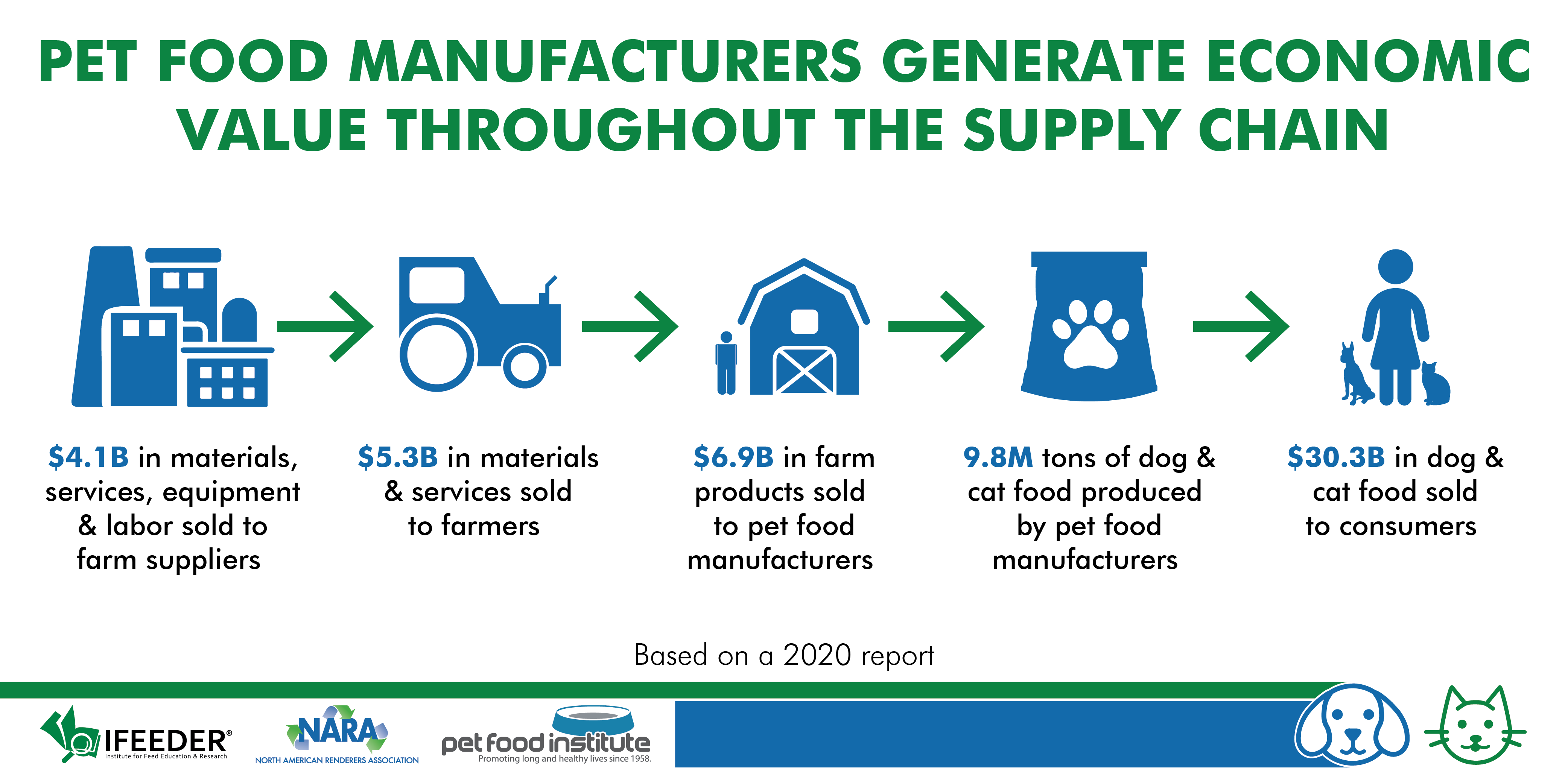Pet Food Production and Ingredients Analysis
New Research Shows United States Pet Food Manufacturers Feed America’s Pets and Agricultural Economy, Sustainably Reduce Food Waste
NARA partnered with The Institute for Feed Education and Research (IFEEDER),and Pet Food Institute (PFI) to release a new, jointly funded report detailing the purchasing power of the $30 billion pet food industry and its economic implications for U.S. agriculture and rural communities. The report also includes an in-depth review of the diverse ingredients most commonly included in dog or cat food.
This first-of-its-kind report finds that U.S. pet food manufacturers not only provide balanced, safe meals for America’s dogs and cats, but also stimulate the overall agricultural economy through the purchase of ingredients, labor and services from related industries.
The research finds that U.S. pet food manufacturers give back to the agricultural economy by using 8.65 million tons of animal and plant-based ingredients for dog and cat food to provide the complete nutrition that pets need, at a value of $6.9 billion. Pet food is also a contributor to the agricultural and rural economies.

Important New Data
The data, compiled and presented by the economic research and analysis firm Decision Innovation Solutions (DIS), shows that pet food manufacturers use an estimated 3.8 million tons of animal-based products, such as rendered products or meat and poultry. Pet food manufacturers also use 4 million tons of farm and farm-product processor ingredients, such as grains, soy products and fruits and vegetables, and approximately 200,000 tons of seafood products. Many of these ingredients are left over from making food for people, such as parts of the animal that people do not eat, reducing food and environmental waste while still providing the nutrition pets need.
With over two-thirds of U.S. households owning a pet and more than $30 billion in pet food sales annually, NARA, the IFEEDER and PFI came together to better understand what goes into the production of pet food.
Rendering’s Role
The rendered protein ingredients that pet food manufacturers use to make pet food are highly sustainable. Rendering reduces food waste by transforming otherwise unused portions of an animal to create safe and nutritious pet food ingredients. The rendering process also naturally returns billions of gallons of water into the environment as clean water and has a greenhouse gas reduction equivalent of removing millions of cars off the road, all sustainable practices that are reflected in the finished pet food product.
While about half of an animal isn’t eaten by people, that food provides proteins that our pets crave due to the high nutrient content. Rendering takes that material, which would have otherwise been wasted in landfills or going down the drain, and transforms it into the safe and nutritious pet food that dogs and cats need.
Read the full report HERE
Help us spread the word by sharing this info on social media! Download infographics from the study HERE!

